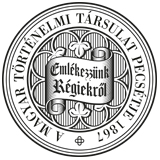Századok – 1992
Tanulmányok - Szakály Ferenc: A magyar nemesség a török hódoltságban V–VI/562
a magyar nemesség a török hódoltságban 631 gistrates" on occupied territory (hódolt esküdt, hódolt szolgabíró). It was mainly through their intervention that the Estates regained from the Türks the administrative and legal positions lost in the previous century. (On this situation unparalleled in world history see also „Magyar adóztatás a török hódoltságban" [Hungarian taxation on Occupied Hungarian Territories. Bp. 1981.], and „Magyar jogszolgáltatás és közigazgatás a török hódoltságban" [Hungarian Jurisdiction in Occupied Hungarian Territories. Under preparation] by the same author). There was a lively circulation of landed estates throughout the 17th century among the Hungarians with the exclusion of the TUrks. The landowners living in Royal Hungary and Hansylvania could not make use of their landed properties on occupied territories, so they mostly let them on lease, put them in pledge or sold them in perpetuity. Those who rented or bought these deserted plots — at times even together with the serfs belonging to them — were mostly local Hungarian communities and individuals with much more local noblemen among them than their rate in the local population would have justified. The whole process was urged by the inexhaustable demand for pastures, the economy of the occupied territories being based primarily on nomadic stock-breeding. The money the well-to-do peasants under Tbrkish rule bought themselves patents of nobility with also came primarily from cattlebreeding and trade in cattle. Being a nobleman resulted, in turn, in a bigger income from breeding and trade, since it helped the person to a number of advantages as against his peasant competitors. Noblemen did not have to pay duties after products produced on their own allodia to the Hungarian authorities (unlike the Tbrkish ones). They could overcome the legal problems inherent in the lease and distraint of uninhabited land (puszta) much easier, since they could institute legal proceedings with the county authorities against those who bothered them in their own right unlike the serfs who were not entitled to sue. They had the full right to make contracts, sell or buy landed property, etc. (It was the same considerations that made the members of the old nobility have their status recognized, since they also were interested in the above mentioned sphere of economy.) The aristocracy in the county apparatus also kept them evidence in return for their services to the county and beside taxing them it usually supported them as well. In spite of their rise on the social ladder, the members of the old and the new nobility living in a peasant community usually identified themselves with their peasant neighbours. As chief justices and members of the town or village councils they took more than their share of the troublesome local administration and were not exampt from serving in the peasant guard brought about against Hungarian warriors from the castles rambling on occupied territory and against the gangs of robbers to be found all over. This referred also to those noblemen who gradually became real landowners with inhibited villages and serfs whom they could tax. (A nobleman of Gyöngyös, for example, took half a demesne as a pledge in the middle of the century with dozens of uninhabited plots and several inhabited ones.) Although the Turks reacted upon these changes in their difficult and incongruous way and protested against the mass ennoblement in the early 17th century, they invariable considered the noblemen under their rule as subjects without any rights, as equals of their serfs in every respect The nobility outside the occupied territories also considered them inferior. (In the case of those who gamed nobility without landed property and had to pay tax other kinds of duties to their former landlords also afterwards, this attitude was quite justified, too.) The members of the old nobility outside occupied Hungary could not make the diet curb the new nobility's rights and their capacity to sue after all. They managed, however, to make their local counterparts pay them duties after their common pusztas on account of their increased income coming from them. The officials of the border castles nearly always treated the so-called hódolt esküdt (or jurors of the occupied territories merely as messengers who could be sent here and there. As a result, the noblemen living in peasant communities under Turkish rule gradually became once agam members of those communities after the expulsion of the Turks where they had come from.
